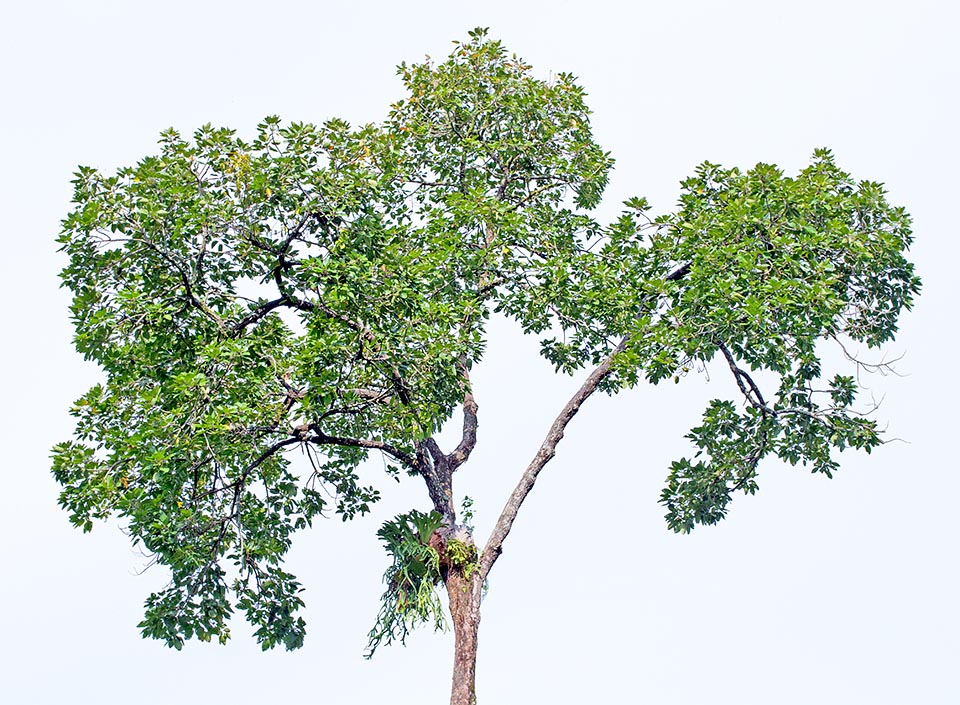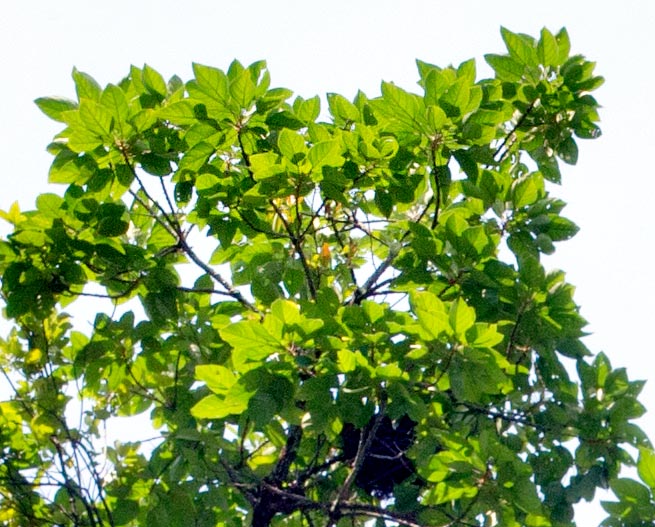Family : Malvaceae

Text © Pietro Puccio

English translation by Mario Beltramini
The species is native to Brunei, Cambodia, Indonesia (Kalimantan and Sumatra), Laos, Peninsular Malaysia, Singapore, Thailand and Vietnam where it grows in the rainforests up to about 1000 m of altitude, mainly on rocky soils.
The name of the genus is the Greek substantive “σκάφος” (scaphos) = hull, with reference to the shape of the fruits; the specific name is the combination of the Greek adjective “μακρός” (macrόs) = wide, big and of the substantive “πούς, ποδός” (pus, podόs) = foot.

In South-East Asia the Scaphium macropodum can be 45 m tall with big tabular roots that have earned it the specific name of great foot © Giuseppe Mazza
The Scaphium macropodum (Miq.) Beumée ex K.Heyne (1927) is a towering tree, evergreen or deciduous for short time, erect, that in the old specimens in the wild can reach the 45 m of height, with trunk, of 1-1,5 m of diameter, with brown grey fissured bark, provided at the base of tabular roots (flat roots similar to buttresses that contribute in supporting the great trees) up to 2 m of height.
The leaves, spirally arranged, on a 5-40 cm long petiole, are of variable shape, palmate, with 3-5 lobes, in the young plants, simple in the adult ones, ovate-oblong with pointed apex and entire margin, 15-26 cm long and 7-12 cm broad, coriaceous with prominent ribs below.

The leaves are spirally arranged, blooming is sporadic and the fruit contains only one 3 cm long seed. From the seeds they get an edible gelatinous mucilage used also, like the leaves, for various pathologies © Giuseppe Mazza
The blooming takes place irregularly every 3-4 years with unisexual panicle inflorescences on the same plant, terminal or axillar, 3-20 cm long, compact, pubescent, bearing tiny flowers, about 5 mm of diameter, with campanulate calyx with 5 curved lobes of greenish white colour. The fruit is a follicle, up to about 20 cm long and 5 cm broad, initially greenish yellow, then brown when ripe, foliaceous, dehiscent with hull shape that facilitates its dispersion through the wind, containing one only ellipsoid seed placed at the extremity, 3 cm long and of 1,5-2 cm of diameter, wrinkly, of brown colour.
It easily reproduces by seed, in organic draining loam maintained humid at the temperature of 26-28 °C, with the first blooming occurring from the seventh year of age, and by air layering. During the initial phase of growth the plants need a shading around the 50%, being particularly sensitive to the excessive insolation.
Species known in Indochina due to the edible gelatinous mucilage that the fruits, dried up in the sun, form after having been immersed in water for some hours and that is utilized as ingredient of various dishes or for preparing refreshing beverages with possible addition of sugar. Another employment, along with the leaves, of this mucilage stands in the traditional medicine, for various pathologies, and a high demand comes also from China, towards which is sent part of the seeds collected in the forests and that forms a small source of revenue for the local populations.
The wood, of good quality and relatively easy to work, is utilized for furniture, inner parts of the dwellings, crates and in the fabrication of the plywood.
Synonyms: Carpophyllum macropodum Miq. (1861); Sterculia macropoda (Miq.) Hook. ex Kloppenb. (1907); Firmiana borneensis Merr. (1929); Scaphium borneense (Merr.) Kosterm. (1969).
→ To appreciate the biodiversity within the MALVACEAE family please click here.
